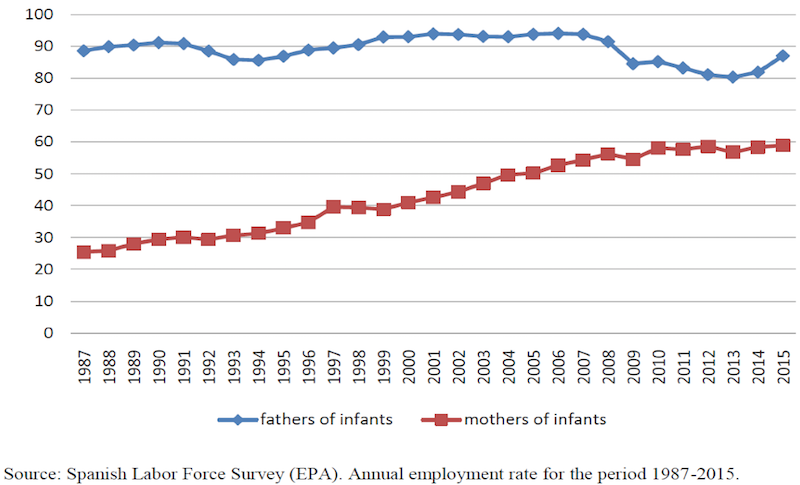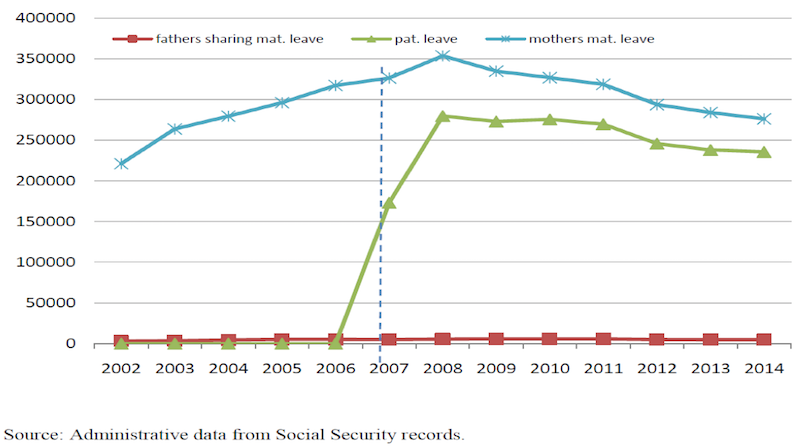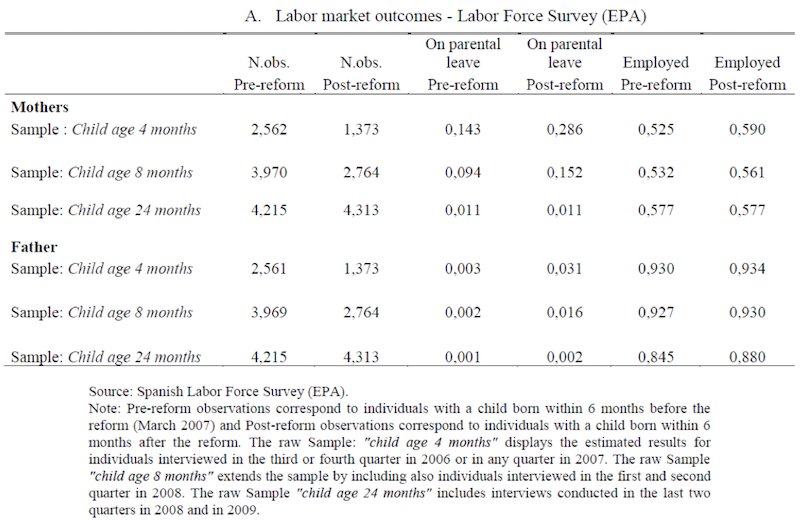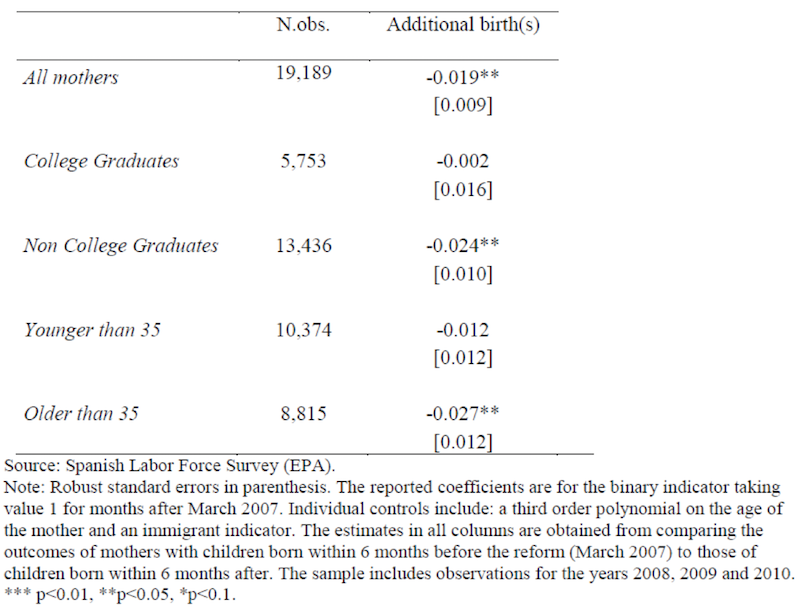What is the impact of increasingly generous maternity and paternity benefits? In their BSE Working Paper (No. 978), “The Effects of Paternity Leave on Fertility and Labor Market Outcomes,” Lídia Farré and Libertad González analyze the effect of the introduction of a paternity leave allowance in Spain on households’ labor market and fertility decisions.
Current state of research
Parental leave policies were initially designed to protect mothers’ and children’s health at an early age, as well as to help balance family and market work. Farré and González point out that most countries have policies allowing both parents to take time off from work when a child is born. Such policies have been implemented to promote a more gender balanced contribution to childcare, and have the potential to reduce statistical discrimination against women in the labor market. Greater participation by fathers in child rearing activities may influence mothers to return to work sooner after child birth, but it may have opposite effects on the employment prospects of fathers. The effects on fertility are ambiguous, as mothers may be willing to have more children, while fathers may be dissuaded with the extra involvement in child-rearing.
In this paper, Farré and González study the effects of the introduction of a paternity leave quota in Spain. The analysis is based on the effects of new law that was passed in March 2007, providing 2 weeks of extra leave exclusively reserved for new fathers. The policy provides a natural experiment to study the impact of paternity leave allowances on the labor market outcomes and fertility of households.
Data sources and empirical analysis
The authors make use of data from 3 sources to test their hypothesis. In the empirical analysis most of the results are obtained from the Spanish Labor Force Survey (Encuesta de Población Activa), which contains information on labor market and fertility outcomes of households. Additionally, Farré and González supplement their analysis with administrative Social Security data (Muestra Continua de Vida Laborales), with information on earnings and employment status, plus administrative birth-certificate records.
As shown in Figure 1 below, Spain has a low rate of female employment and not a very generous family benefit system. Until 2007, mothers were allowed 16 weeks of maternity leave out of which 10 weeks could be shared with the father of the child. In March 2007, a permit of two weeks exclusively reserved for fathers and non-transferable to mothers was introduced. In Figure 2, the green line shows the sudden jump in paternity leave after the introduction of the reform. One year after implementation, 54% of all new fathers took paternity leave, compared to almost none before the reform.


What do we learn?
Using a regression discontinuity design, Farré and González estimate the effect of this policy on the labor market and fertility outcomes of parents. They find that the two weeks of “use-it or lose-it” parental leave substantially increased the take up rate of fathers, by 400% compared to the pre-reform mean. Importantly, the policy led to an 11% increase in the employment probability of mothers shortly after child birth. However, these short-term effects do not materialize in long-term changes in the employment of mothers or the involvement of fathers in child-rearing (see Table 1).

Additionally, the policy delayed childbearing and reduced higher-order births among women by 15% compared to the pre-reform period. As shown in Table 2, the decline in fertility affected mainly non-college graduates and women older than 35. This result contrasts with previous studies for other countries, which found that the introduction of parental leave exclusively reserved for fathers did not affect fertility. Farré and González argue that the drop in fertility could be driven by the potential increase in childbirth cost for fathers and the early return to work of mothers.

Conclusion
Farré and González note than there may be a limited scope for public intervention to alter the social or cultural norms that govern the persistent gendered division of household tasks. A more intensive reform, such as equalizing the duration of parental leave across both genders, may have a stronger effect on the division of childcare chores. Further, undesired effects on fertility may be particularly worrisome in countries with lower-than-replacement fertility rates such as Spain. All in all, more research is needed to identify the optimal combination of family policies to achieve gender equality in the labor market and at home.


